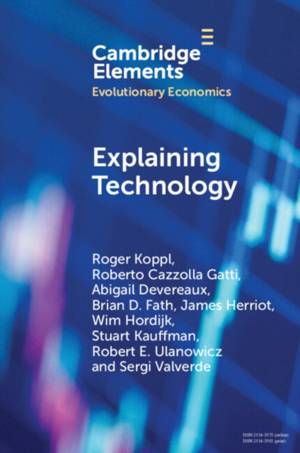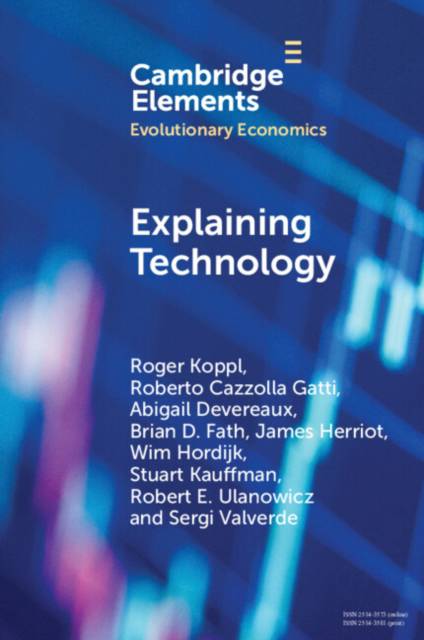
- Afhalen na 1 uur in een winkel met voorraad
- Gratis thuislevering in België vanaf € 30
- Ruim aanbod met 7 miljoen producten
- Afhalen na 1 uur in een winkel met voorraad
- Gratis thuislevering in België vanaf € 30
- Ruim aanbod met 7 miljoen producten
Zoeken
Omschrijving
A long tradition explains technological change as recombination. Within this tradition, this Element develops an innovative combinatorial model of technological change and tests it with 2,000 years of global GDP data and with data from US patents filed between 1835 and 2010. The model explains 1) the pace of technological change for a least the past two millennia, 2) patent citations and 3) the increasing complexity of tools over time. It shows that combining and modifying pre-existing goods to produce new goods generates the observed historical pattern of technological change. A long period of stasis was followed by sudden super-exponential growth in the number of goods. In this model, the sudden explosion of about 250 years ago is a combinatorial explosion that was a long time in coming, but inevitable once the process began at least two thousand years ago. This Element models the Industrial Revolution as a combinatorial explosion.
Specificaties
Betrokkenen
- Auteur(s):
- Uitgeverij:
Inhoud
- Aantal bladzijden:
- 75
- Taal:
- Engels
- Reeks:
Eigenschappen
- Productcode (EAN):
- 9781009386258
- Verschijningsdatum:
- 31/08/2023
- Uitvoering:
- Paperback
- Formaat:
- Trade paperback (VS)
- Afmetingen:
- 152 mm x 229 mm
- Gewicht:
- 127 g

Alleen bij Standaard Boekhandel
+ 45 punten op je klantenkaart van Standaard Boekhandel
Beoordelingen
We publiceren alleen reviews die voldoen aan de voorwaarden voor reviews. Bekijk onze voorwaarden voor reviews.











